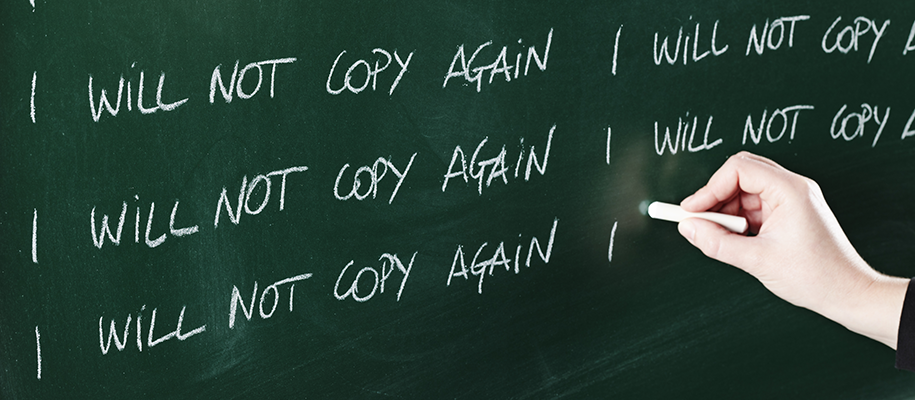Spiders, horror movies, heights, public speaking, and tight spaces. These are all common fears, but I think another should be added to the list: the fear of unintentional plagiarism. My anxiety levels soar every time I write a formal paper. How do I know if I’ve cited my sources correctly? Is my paraphrase too close to the original? I know I’m not the only one with plagiarism paranoia. Since I discovered most of my worry stems from a confusion about what counts as stealing someone else’s work, I say it’s time to dispel a few common plagiarism myths.
Myth #1: Citing sources is only necessary for direct quotations
While most of us know citations for direct quotes are essential, it’s easy to forget that even a paraphrase requires an attribution. If you leave out the citation, your readers will assume you’re writing using your own ideas. Whether your citation style calls for footnotes or parenthesis, make sure to give credit where credit is due. Both Purdue University's writing labs and Plagiarism.org offer some helpful tips for citing correctly.
Related: Plagiarism: What It Is and How to Avoid It on Assignments
Myth #2: It's not plagiarism if you use different wording
According to Plagiarism.org, in order to paraphrase correctly, “You must change both the words and the sentence structure of the original, without changing the content.” I love thesauruses. But their handy-dandy synonyms alone are not enough to avoid plagiarism: your brain has to supply the creativity to both rehash the existing (cited!) work in a new way and, ideally, build on it with your own ideas. This isn’t as difficult as you might think. You can often shuffle the placement of thoughts without diverging from the intended meaning. However, caution should be exercised. Take care that cause-effect relationships remain clear and related terms remain, well, related in your new sentences. If you can’t paraphrase without your paragraph becoming confusing, quoting may be a better option. And remember, just because a word shows up in a synonym list doesn’t mean it has the same definition as your first word. Here’s an example of a good paraphrase from Jane Eyre (Brontë, Charlotte. Jane Eyre. London: Penguin, 2008. 111. Print.):
- Original: “It is in vain to say human beings ought to be satisfied with tranquility: they must have action…”
- Paraphrase: In the novel Jane Eyre, Jane observes that all humans share an innate restlessness. (111)
And most importantly, don’t forget to cite your sources!
Myth #3: Images don’t require citations
Images labeled “public domain” are considered free for the using. But many images are not public domain, and these images must be cited. Some image authors also require permission for the use of their work, so you must either avoid using these images or seek permission (and probably obtain it in writing). The next time you want to copy and paste a picture from the Web into your assignment, remember to examine your source’s usage information.
Related: Top 5 Tips on How to Deal With Soul-Sucking Essays
Learning how to avoid accidental plagiarism isn’t hard. When in doubt, cite it out! One mistake could land you in a ton of trouble. And if you’re not sure what’s best, reach out to your teacher or professor—they’re always there to help and ensure you’re doing your best. Now is the time to conquer citations and put plagiarism fear in its place.
Need a break from reading articles and writing that paper? Check out some videos on the CollegeXpress YouTube channel.




